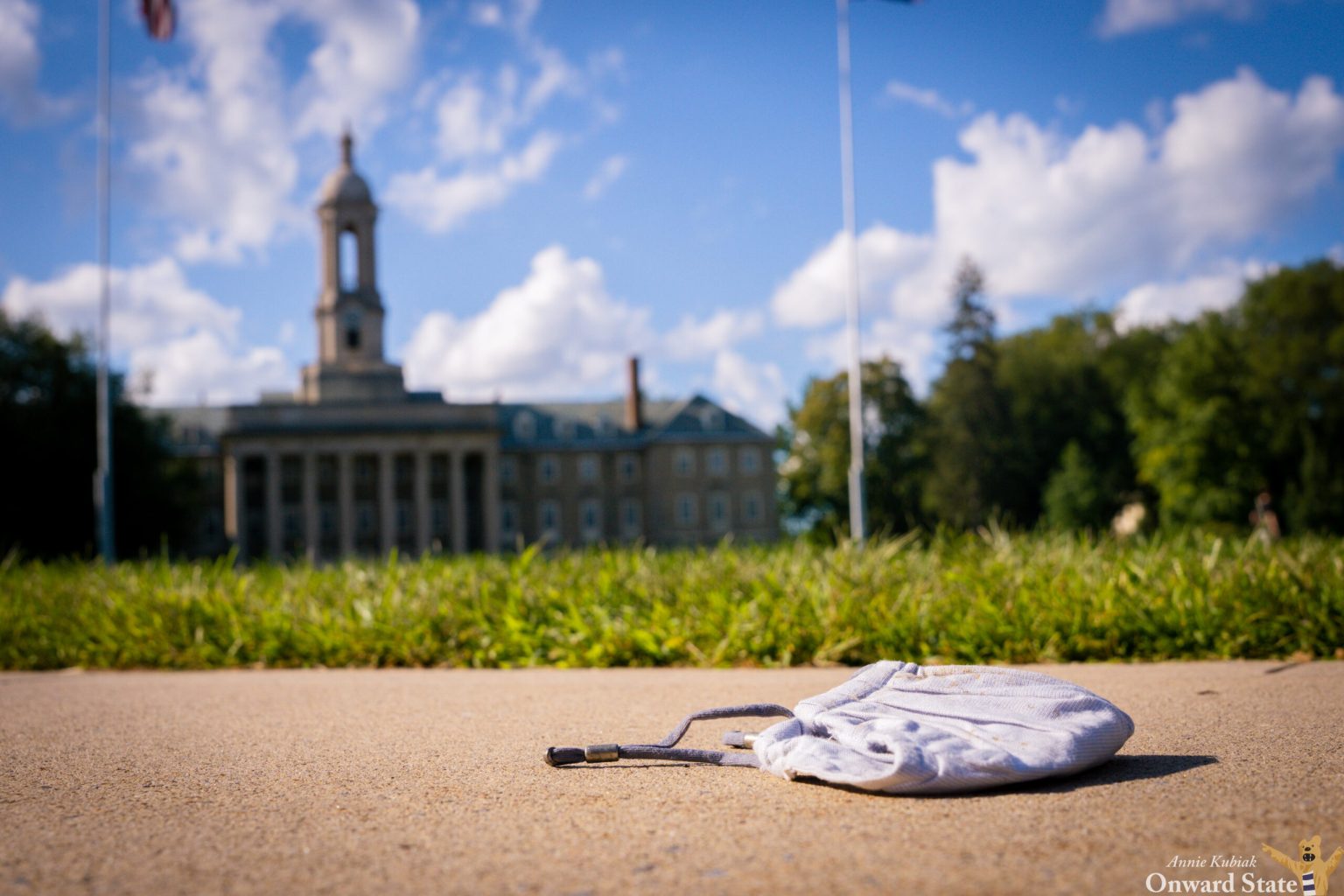Just about three weeks after announcing changes to its indoor masking guidelines, Penn State is removing requirements almost entirely, the university announced early Tuesday morning.
Starting on Wednesday masks will no longer be required in most classrooms, labs, or other “academic spaces.” Over spring break, Penn State removed masking requirements for indoor spaces like dorms, dining halls, on-campus gyms, marketplaces, sporting events, and classrooms used for extracurricular activities.
Masks will still be required where mandated by law, including particular workplaces, public transportation services, or health care settings. Masking also will continue to be needed human subject research labs with high-risk participants and at the College of Medicine to support patient care.
Employees who work in their own individual offices can request visitors wear masks while in the office and faculty can request students wear masks during classes.
“The University asks that community members cooperate respectfully with these requests,” according to a news release
Penn State’s policy change comes after the Centers for Disease Control made changes to its community level metrics, which now factor COVID-19 hospitalizations, local hospital capacities, and cases into the equation. The CDC now says indoor masking generally isn’t recommended or required for counties within “low” or “medium” thresholds.

Centre County has been within a “low” community-level threshold for the last two weeks. Crawford County is currently the only Pennsylvania county at the “medium” community level.
“With transmission levels low in much of the commonwealth and the high vaccination rates of our campus communities, we believe we can safely alter our masking and testing requirements at this time,” Penn State President Eric Barron said. “We will continue to provide voluntary testing to students, as well as contact tracing and quarantine and isolation space as needed; and any individual who wishes to continue wearing a mask indoors is encouraged to do so.”
Penn State will continue offering walk-up COVID-19 testing at the White Building, although unvaccinated students and employees are, for now, no longer required to complete weekly testing.
The White Building will offer testing on the following schedule this spring:
- Noon to 5 p.m. on Sundays
- 9 a.m. to 5 p.m. Mondays & Tuesdays
- 9 a.m. to 7 p.m. on Wednesdays
- 9 a.m. to 5 p.m. on Thursdays & Fridays
- Closed on Saturdays
Faculty and staff who want testing will need to do so through their health care provider or other local testing options. Free at-home tests previously offered by the university through Vault Health are no longer available.
Currently, 92% of students and 86.3% of employees at University Park are fully vaccinated against COVID-19, according to Penn State’s COVID-19 Dashboard. Both rates surpass Centre County’s 63.4% full vaccination rate among adults.
COVID-19 spread in Pennsylvania has greatly declined in recent weeks. On Monday, the state reported fewer than 1,000 new positives for the 10th time in 11 days. Centre County logged seven new cases, marking a single-digit increase for the second straight day and the 10th time in the last month. Mount Nittany Medical Center had four COVID inpatients on Monday, down about 90% from a month ago.
Due to “anticipated low usage of voluntary and asymptomatic testing,” Penn State said it will stop regularly updating its COVID-19 Dashboard beginning on April 7. Archived data will remain available.
For more information on Penn State’s latest COVID-19 policies, visit its dedicated website.
Geoff Rushton contributed to this report.



